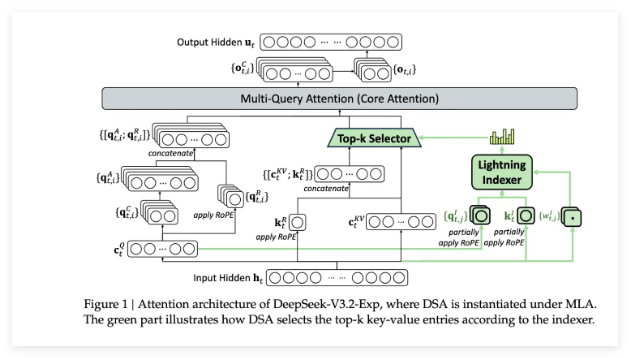对比实验
显存占用情况
使用StableDiffusionXLPipeline.from_pretrained() 方法SDXL半精度加载显存占用约7G左右。
使用load_lora_weights()加载了5个Lora模型后显存提升到8G,平均每个Lora的大小在200M左右。
使用unload_lora_weights()后显存没有发生变化,还是8G,说明该方法不会清空已经加载到显存的Lora模型,但这时候再调用模型生成图片已经丢失Lora的效果了。
推理耗时
Lora数量 耗时(秒) 0 15 1 20 2 24 … … 7 45这里使用的Lora平均每个的大小在200M左右,从上表不难发现单个Lora耗时约增加4秒左右。
代码分析与原理说明
1)加载Lora
通过调用load_lora_weights()来加载不同的Lora权重,这些权重的张量都会加载到显存中,但注意只有第一次调用该方法的Lora才会生效,可通过get_active_adapters()查看。
def load_lora_weights( self, pretrained_model_name_or_path_or_dict: Union[str, Dict[str, torch.Tensor]], adapter_name=None, **kwargs ): ... # lora_state_dict 实际执行把tensor加载到显存中,同时返回2个字典记录所添加的lora的名称和配置信息 state_dict, network_alphas = self.lora_state_dict(pretrained_model_name_or_path_or_dict, **kwargs) # state_dict 和 network_alphas 是上面返回的2个参数 # 加载后默认调用的lora是第一次load进来的lora self.load_lora_into_unet( state_dict, network_alphas=network_alphas, unet=getattr(self, self.unet_name) if not hasattr(self, "unet") else self.unet, low_cpu_mem_usage=low_cpu_mem_usage, adapter_name=adapter_name, _pipeline=self, ) self.load_lora_into_text_encoder( state_dict, network_alphas=network_alphas, text_encoder=getattr(self, self.text_encoder_name) if not hasattr(self, "text_encoder") else self.text_encoder, lora_scale=self.lora_scale, low_cpu_mem_usage=low_cpu_mem_usage, adapter_name=adapter_name, _pipeline=self, ) 用一张图来表示load_lora_weights()加载过程,蓝色表示生效的张量。
因此如果不特别指定调用哪个Lora的话,默认输入的张量需要跟Base和第一个Lora的权重分别相乘再叠加
2)卸载Lora
卸载Lora时需要调用unload_lora_weights()方法,关键是把config删除,并不清显存,如代码中的del self.unet.peft_config操作。如果后续需要再调用Lora的话,则需要重头开始加载Lora权重。
def unload_lora_weights(self): if not USE_PEFT_BACKEND: if version.parse(__version__) > version.parse("0.23"): logger.warn( "You are using `unload_lora_weights` to disable and unload lora weights. If you want to iteratively enable and disable adapter weights," "you can use `pipe.enable_lora()` or `pipe.disable_lora()`. After installing the latest version of PEFT." ) for _, module in self.unet.named_modules(): if hasattr(module, "set_lora_layer"): module.set_lora_layer(None) else: recurse_remove_peft_layers(self.unet) if hasattr(self.unet, "peft_config"): # 关键是把config删除,并不清显存 # 因此执行unload_lora_weights 会丢失所有记载的lora的config信息,但不会释放显存 del self.unet.peft_config 3)指定Lora
在拥有多个Lora加载后,如果需要指定某个或者某几个Lora,则需要用set_adapters()方法。该方法对Unet和Text Encoder都执行set_adapter()操作,间接调用了peft_utils模块中的set_weights_and_activate_adapters() 方法为Unet或者Text Encoder的某些层指定Lora类型和权重。
def set_adapters( self, adapter_names: Union[List[str], str], adapter_weights: Optional[List[float]] = None, ): # 对unet和text encoder都执行set adapter操作。间接调用 set_weights_and_activate_adapters 方法 self.unet.set_adapters(adapter_names, adapter_weights) # Handle the Text Encoder if hasattr(self, "text_encoder"): self.set_adapters_for_text_encoder(adapter_names, self.text_encoder, adapter_weights) if hasattr(self, "text_encoder_2"): self.set_adapters_for_text_encoder(adapter_names, self.text_encoder_2, adapter_weights) # src/diffusers/utils/peft_utils.py def set_weights_and_activate_adapters(model, adapter_names, weights): from peft.tuners.tuners_utils import BaseTunerLayer # iterate over each adapter, make it active and set the corresponding scaling weight for adapter_name, weight in zip(adapter_names, weights): for module in model.modules(): if isinstance(module, BaseTunerLayer): # For backward compatbility with previous PEFT versions if hasattr(module, "set_adapter"): module.set_adapter(adapter_name) else: module.active_adapter = adapter_name module.set_scale(adapter_name, weight) 如果已经执行过set_adapter(),而下次又需要使用不同的Lora,则重新执行set_adapter()选择需要的Lora即可。
4)解除Lora
如果不需要Lora,想用Base模型直接生成图片,这时候可以通过disable_lora()方法来解除已经指定好的Lora。这时候再生成图片,输入的张量只会跟Base的矩阵张量相乘。
注意:后续如果需要重新使用Lora,必须先执行 enable_lora() 方法!
# src/diffusers/utils/peft_utils.py#L227 # disable_lora底层调用了该方法 # 会把Unet和Text Encoder的某些层注释掉Lora,因此达到解除Lora的效果 # 可以看到效果和指定Lora时刚好是相反的 def set_adapter_layers(model, enabled=True): from peft.tuners.tuners_utils import BaseTunerLayer for module in model.modules(): if isinstance(module, BaseTunerLayer): # The recent version of PEFT needs to call `enable_adapters` instead if hasattr(module, "enable_adapters"): # false的时候注释掉 lora适配器 module.enable_adapters(enabled=enabled) else: module.disable_adapters = not enabled 5)查看Lora
通过get_active_adapters()方法即可查看指定的Lora,即前面示例图中蓝色的Lora模块。
def get_active_adapters(self) -> List[str]: if not USE_PEFT_BACKEND: raise ValueError( "PEFT backend is required for this method. Please install the latest version of PEFT `pip install -U peft`" ) from peft.tuners.tuners_utils import BaseTunerLayer active_adapters = [] for module in self.unet.modules(): if isinstance(module, BaseTunerLayer): active_adapters = module.active_adapters break return active_adapters 6)融合Lora
前面已经实验过,当有多个Lora调用时,推理时间几乎会线性增加,这是因为输入的张量除了与Base的模型相乘外,还需要与每个Lora相乘再叠加,因此推理时间会变长。一种解决方案是将需要的Lora与Base进行合并,即通过fuse_lora()来实现,这样推理时间可与Base单独使用时一致。下图中深蓝色表示Base的权重已经叠加了需要的Lora的权重,因此输入张量无需再经过Lora。但是缺点是多次融合Lora后,Base将无法恢复,需要后续需要单独使用Base,只能重新加载Base!




















